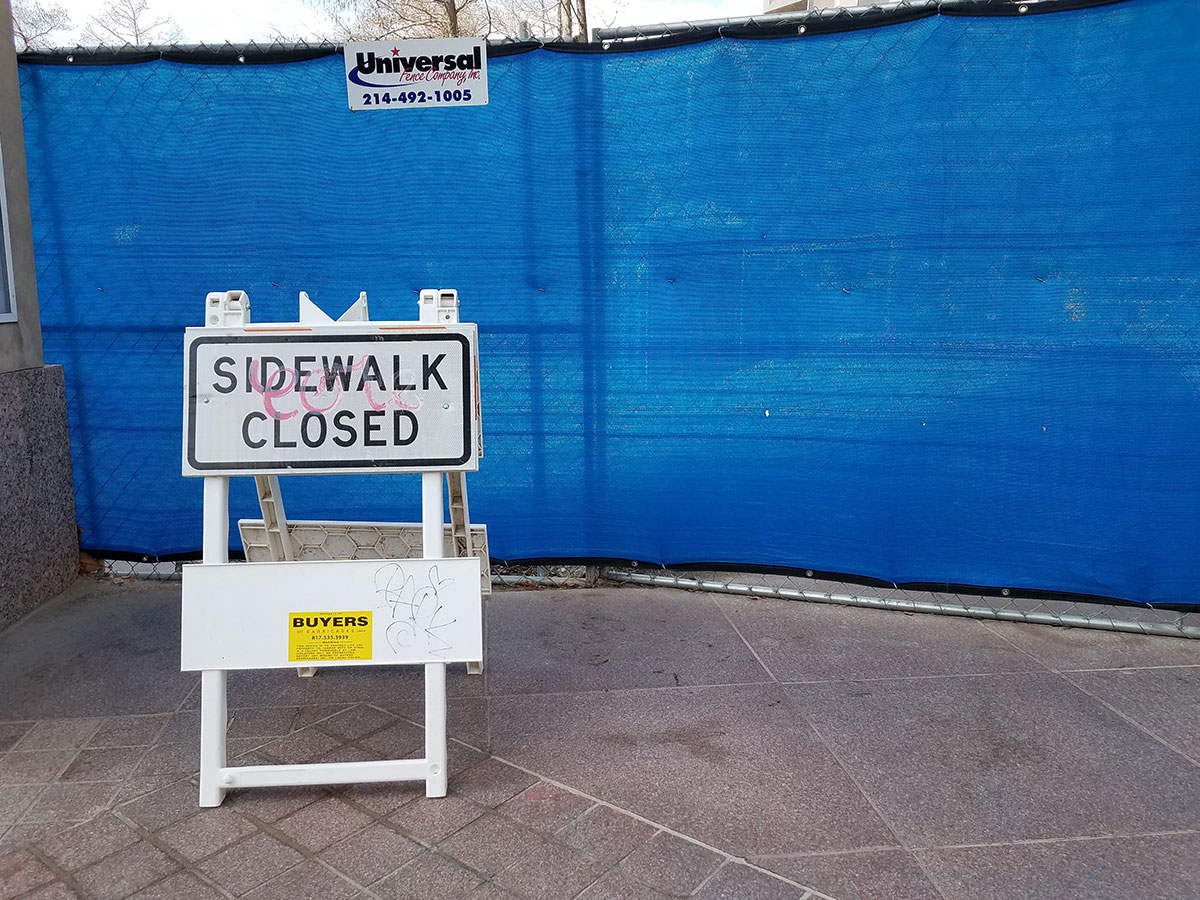This morning we saw some fresh evidence that, if you are a pedestrian, this city is passively trying to make you inconvenienced, if not actively trying to kill you. Even without any sidewalk-blocking construction, walking in Dallas can be dangerous, something backed up by the data and plenty of personal anecdotes: Spend a week hoofing it from downtown to the Cedars during afternoon rush hour, and you’ll begin treating the desperate sprint across eastbound Griffin Street on Akard as a daily opportunity for prayer to whatever God you believe in.
So yes, further proof that Dallas could benefit from more infrastructure for walking and bicycling. Want some more? There’s this relevant post at StreetsBlog USA, which looks at the Texas Department of Transportation’s Strategic Highway Plan to justify the headline, “Texas DOT Aims for More People to Get Killed in Traffic.”
As a quick summary, TxDOT anticipates the number of statewide traffic fatalities to steadily increase, despite the proposed implementation of new measures including intersection redesigns and an emphasis on pedestrian safety. It anticipates that in 2022, about 4,241 people in Texas will die in traffic accidents, up by more than 450 fatalities from 2016. This is billed as a relatively good thing. TxDOT says that without those new safety measures, that number would be 2 percent higher.
This is because TxDOT predicts a continuing uptick in traffic mileage, and because the agency is too timid to take bolder action in a state that stereotypically values its big trucks and highway road trips. It’s a fairly simple equation that more vehicle traffic equals more traffic deaths.
The half-hearted measures proposed by the state don’t go far enough in rethinking Texas transit. Jay Crossley, the director of the Austin-based nonprofit Farm & City (“committed to high quality urban and rural habitat”), tells StreetsBlog that TxDOT’s rationale for not doing more is garbage:
In the TxDOT forecast, the agency depicts itself as a passive bystander, watching as low gas prices and a humming economy propel traffic mileage higher, and with it, traffic deaths. Crossley says TxDOT has abdicated its responsibility by refusing to consider how it can reduce vehicle miles traveled, or VMT.
“The big one is VMT, this idea that VMT and economic growth are linked,” he said. “They think it’s important to increase VMT.”
“If that’s basically state policy, it’s hard to reduce deaths.”
There’s a long list of policy tools TxDOT could deploy to shift trips away from driving, like implementing variable tolling on Interstates or investing more in transit service and biking and walking infrastructure. That’s not on the agency’s agenda, however.
Obviously, what the state prioritizes in transportation policy will inform and potentially hamstring Dallas’ own mobility plans. At a City Council briefing earlier this week, a couple council members voiced their concern that one of the biggest proponents of smart transportation policy in North Texas and elsewhere, Victor Vandergriff, is stepping down as the region’s TxDOT commissioner. Considering some of the prevailing thinking at TxDOT, that’s a major loss for advocates of walkable cities in Texas.
Investing in public transit, sidewalks, and bike lanes isn’t just good for quality of life and economic opportunity, although it is certainly that. It’s a public safety issue.
If Dallas can’t count on the state, it’s even more important for the city to get the development of its strategic mobility plan right.





